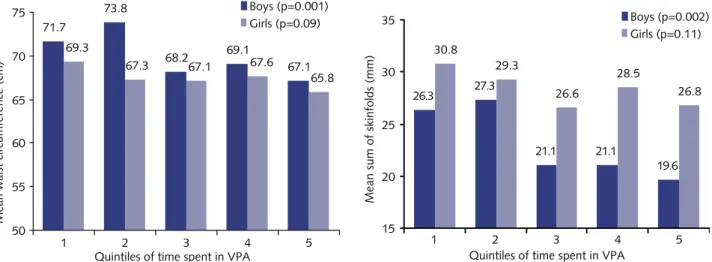Objectively measured physical activity and body composition indices in Brazilian adolescents
Texto
Imagem




Documentos relacionados
A razão por que designamos aqui de sistema semi-formal, deve-se ao facto de, as especialidades que compõem este sub-sistema de saúde, se basearem em
Los diferentes resultados que se presentan a continuación, muestran rasgos que demarcan las características en lo que respecta a aspectos vinculados a la investigación, referente a
Only fully available scientific papers that measured Active Play or leisure time physical activity independently from other types of physical activity in Brazilian children
Adolescents diagnosed with asthma were more active than their non-asthmatic peers in this study, and this finding persisted when wheezing was present in the last 12 months and
18 State Key Laboratory of Nuclear Physics and Technology, Peking University, Beijing, China.. 19
Energy expenditure through physical activity in a population of community-dwelling Brazilian elderly: cross-sectional evidences from the Bambuí Cohort Study of Aging..
C-reactive protein, physical activity and cardiorespiratory fitness in Portuguese adolescents: a cross-sectional study.. Proteína C-reativa, atividade física e aptidão
O modelo de negócio de Osterwalder (2004) poderá ser uma mais-valia na aplicação do modelo de avaliação da qualidade das respostas sociais, (antes que a instituição seja alvo